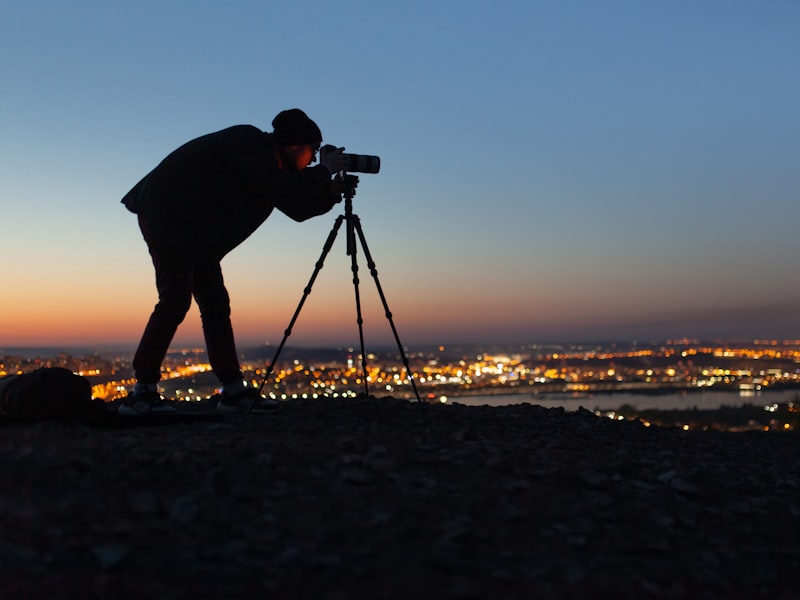How Does Search And Rescue Teams Track Weather Conditions In The Field?

""
Tim Gorman, Castle Rock Police Department Investigator, sits on top his flooded-out car while he waits for Denver firefighters to rescue it from a highway in 2002 after a major storm.
Andy Cross/The Denver Post via Getty Images
Weather can make it difficult to rescue someone in a crisis situation. What if there are too many waves to help a passenger stranded at sea? Or what if a blizzard descends on a couple trapped on a mountain in winter?
Wind, snow and heavy rain can turn the needle-in-a-haystack exercise of search and rescue work into a taller task by making it harder for rescue teams to get into remote areas like forests, mountain ranges and floodplains. Even minor weather conditions like cloud cover can make it difficult for rescue helicopters to land. Extreme weather can also make finding a person difficult once they are on the scene. It can disrupt communication lines and reduce the time that searchers have to do their jobs safely. [sources: Fox News and Ventura County Search and Rescue. Kramer]. Rescuers should be aware of both current and future conditions. Emergency professionals have a variety of tools available to them to track extreme weather conditions. Some of these tools can be accessed with just a few clicks on a smartphone.
Search and Rescue Weather Tracking Technology
Search and rescue workers and anyone else who might need to be searched for or rescued is happy to know that they don’t have to wait for Aunt Bessie’s arthritis to flare up before they can see if the wind is blowing. There are many weather tracking technologies available to help prepare for and monitor conditions out in the field.
Many helicopters and boats are equipped with radars that monitor storms and measure their intensity. This allows operators to navigate around them. Weather radar has existed since the 1940s and now comes in digital and color formats that alert users to oncoming storms and related turbulence by looking for heavy rain clouds. The radar can calculate the time it takes for pulses to reach their target and return so that it can determine how far away the target (like a raincloud) is. However, weather radars have limits. They are unable to track moisture like rain, hail or wetsnow, but they do track clouds. They also have a harder job measuring "dry", such as hard snow and ice crystals [sources]: Baur, National Weather Service].
Search and rescue workers can use commercially-available handheld and mobile weather reading devices to provide ground-specific information. These lightweight weather stations can provide vital information and may look like they were built in a junkyard. Modern versions are equipped with an LCD screen that tracks everything from temperatures and wind speed and direction to rainfall levels and air pressure. They can also provide forecasts and usually some historical weather data [source: Ambient Weather].
Hand-held weather sensors are even more compact. These tiny tools can be used to track wind speeds, gusts, water and snow temperatures, barometric levels, humidity, dew point, and barometric Pressure levels. This is a lot of information for an instrument that weighs only 2 ounces (57g) [source: Ambient weather].
NASA's Numbers estimates that over 33,000 people have been saved by search and rescue efforts worldwide since 1982 when people started sending distress signals to its satellites. Search and rescue personnel around the globe use these signals to locate missing or stranded individuals [source: Jarrell].S. Coast Guard and Virginia Port Authority receive maritime search and rescue training.
Photo of the U.S. Coast Guard taken by Petty officer 1st Class Brandyn hill
Other technologies have also been developed to help rescuers forecast the effects of weather on certain types of rescue and search operations. U.S. Coast Guard workers in Long Island Sound, for example, use a computer program to create "drift models" that predict how wind and currents might move a person lost at sea. Similar software has also been used in the search for Air France Flight 447 wreckage off Brazil and monitoring Japanese tsunami debris in Pacific Ocean [sources; Kramer, U.S. Coast Guard. NOAA].
In order to monitor weather during forestfires, firefighters and rescue personnel often rely heavily on information from Remote Automatic Weather Stations (RAWS). A network of around 2,200 RAWS is scattered across the United States. It is operated by the National Interagency Fire Center. This network is used to predict fire patterns based upon wind and air conditions. ROMAN is a web site that the National Oceanic and Atmospheric Administration operates. It provides detailed weather information gleaned straight from the National Weather Service and RAWS. The site, which stands for Real-time Observatory Monitor and Analysis Network allows users to search by geographic coordinates and receive current weather conditions and detailed 24-hour forecasts[source]: Careless].
There is one more noteworthy piece of technology that will help reduce the danger of search and rescue operations in severe weather situations. Unmanned drones, best-known for military and surveillance operations, can also be used to locate missing or stranded persons. Drones can be equipped with infrared, cameras, and other technologies that allow them pinpoint the location of a person or determine conditions inside a burning structure or analyze weather data. This can help rescue workers save time and money. Drones are currently not used in rescue and search operations. However, the U.S Coast Guard is considering purchasing drones for extreme weather conditions. Source: Practical Sailor Wes Anderson's Moonrise Kingdom isn't just a quirky, twee story of precocious young love. It's also a great example of how extreme weather, such as a hurricane in this instance, can ruin a rescue and search operation. teamextreme minecraft server Two 12-year-olds put an entire island on edge while their people attempt to track down the runaways. They navigate strong winds, flash floods, and vicious lightning strikes as they do so. The movie isn’t all doom & gloom. We even get to see Bill Murray walking around with a bottle of wine in his hand and a knife in his other. "I'll return. Murray tells his sons that he will go to a tree-cutting site. This is an exercise that is probably similar to trying rescue two young children in the middle of a natural catastrophe.
How Search and Rescue Works
How do rescue teams search a flooded city?
What technologies have made search-and-rescue easier?
Weather Terms: Cloudy or Clear?
Sources
Ambient Weather. "Davis Instruments6251 Vantage Vue Wireless Weather Station." (Sept. 16, 2013) http://www.ambientweather.com/dain62vavuew2.html#caption
Ambient Weather. "Kestrel 3500 0835 835 Pocket Weather Meter w/ FREE UPS." (Sept. 16, 2013) http://www.ambientweather.com/ke35poweme.html
Baur, Chris. "Weather Radar, Navigating Storms." Rotor & Wing. April 1, 2012. (Sept. 16, 2013) http://www.aviationtoday.com/rw/services/modifications/Weather-Radar-Navigating-the-Storm_76076.html#.UjeK_D9v6Sp
Careless, James. "Weather Report." Fire Chief. Dec. 1, 2008. (Sept. 16, 2013) http://firechief.com/hazmat/weather-report-1208
Forest Technology Services. "Fire Weather Monitoring Services." (Sept. 16, 2013) http://www.ftsenvironmental.com/fireweather/
Fox News. "Death toll of Colorado flooding rises 7 as rescue teams scour rubble to search for missing." Sept. 16, 2013. (Sept. 16, 2013) http://www.foxnews.com/weather/2013/09/16/colorado-braces-for-more-heavy-rain-deadly-floods/
Jarrell, Elizabeth. "From work to play Dr. Lisa M. Mazzuca beacons on search and rescue." NASA.gov. April 9, 2013. (Sept. 16, 2013) http://www.nasa.gov/centers/goddard/about/people/LMazzuca.html
Kramer, Darren. "Coast Guard Chronicles: Search and Rescue." May 12, 2012. (Sept. 16, 2013). http://www.wxedge.com/articles/20120512coast_guard_chronicles_search_and_rescue
National Weather Service. "How does radar work?" (Sept. 16, 2013) http://www.srh.noaa.gov/jetstream/doppler/how.htm
National Oceanic and Atmospheric Administration. "Japan Tsunami Marine Debris." (Sept. 16, 2013) http://marinedebris.noaa.gov/tsunamidebris/
Practical Sailor. "Equipping Drones for At Sea Search and Rescue." December 2012. (Sept. 16, 2013) http://www.practical-sailor.com/issues/37_24/features/Equipping-Drones-for-At-Sea-Search-and-Rescue_10937-1.html
Rotary Wing Society of India. "AWR." (Sept. 16, 2013) http://www.rwsi.org/AWR.pdf
United States Coast Guard. "New Coast Guard Reverse Drift Modeling Program Assists with the Development of Search Patterns for Air France Flight 447 Recovery" June 8, 2009 (Sept. 16, 2013) http://www.uscgnews.com/go/doc/4007/1391943/New-Coast-Guard-Reverse-Drift-Modeling-Program-Assists-with-the-Development-of-Search-Patterns-for-Air-France-Flight-447-Recovery-Operations#sthash.x0GJN91u.dpuf
United States Department of Commerce "NOAA Observing Systems Architecture." (Sept. 16, 2013) http://www.ngdc.noaa.gov/nndc/struts/results?
op_0=eq&v_0=Global%20Remote%20Automated%20Weather%20Stations&op_1=l&t=400239&s=51&d=307&d=305&d=301&d=303&d=416&d=304&d=302&d=308&no_data=suppress&sourceId=101717
Ventura County Search and Rescue. "Man Tracking." (Sept. 16, 2013) http://www.vcsar1.org/tracking1.html
